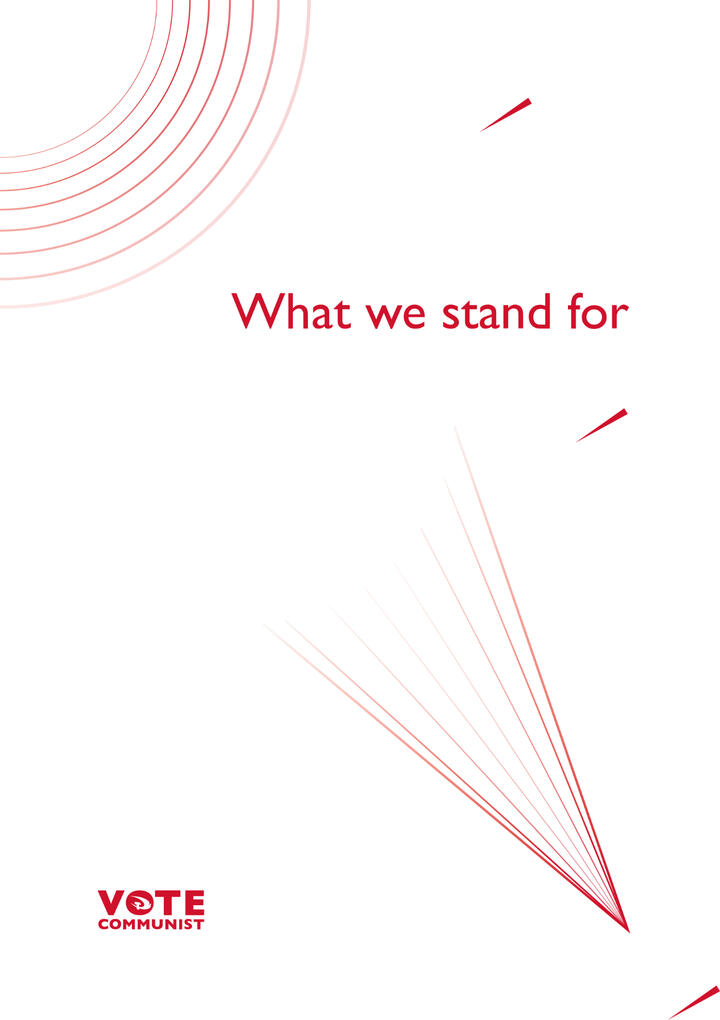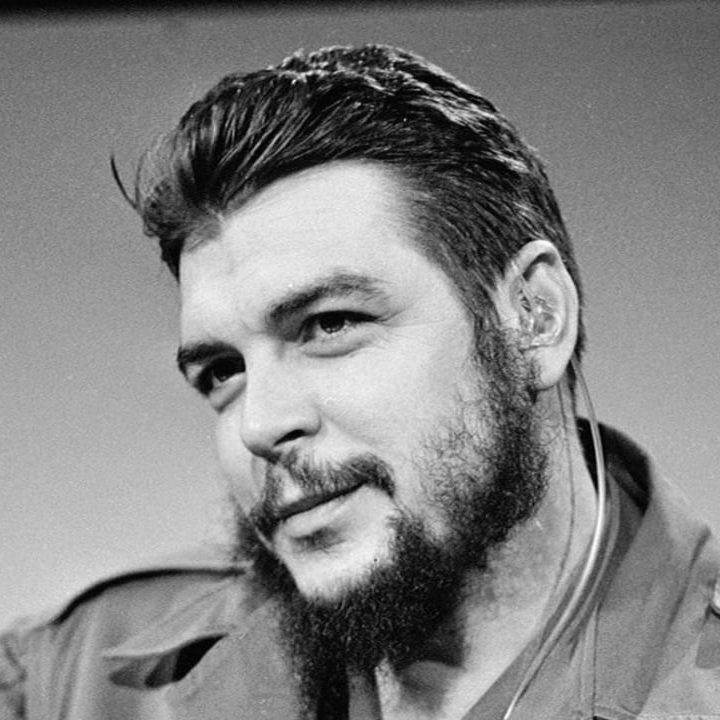Learn about Marxism-Leninism
For Communists, theory and practice, understanding and action, go hand in hand.
Marxism-Leninism is a combination of scientific, philosophical and political theories, developed since Marx and Engels up to the present day.
Marxism-Leninism, also known as Scientific Socialism, allows human beings to understand the problems of history and humanity and find our way in a complex and chaotic modern world.
It allows us to understand the realities of today’s social and economic system, capitalism, and organise to overthrow this degenerate system, save the planet and replace capitalism with a system based on social and economic progress, common ownership and working people’s democracy, Socialism.
There are thousands of books which have been produced all around the world in relation to the theories and practice of Marxism-Leninism. Knowing where to begin with your study to correctly develop your understanding of Communism can be almost impossible. Sure, everyone knows of The Communist Manifesto, but beyond that where do you begin?
To solve this we have put together the Back2Basics guide to develop your initial concepts of Marxist-Leninist theory:
Beyond this, we have put together a number of the most essential and fundamental works written by Communist leaders and theorists, as well as a few Communist Party of Britain publications, available as free PDF downloads below:
YCL Education:

Introducing Marxism
A short study pamphlet by the Communist Party of Britain on Marxism, capitalism, Socialism, Communism, and revolution.

Britain’s Road to Socialism
The regularly updated programme of the Communist Party of Britain, to which we are constitutionally bound, explains the long-term context and strategy of the fight for working class power and Socialism in Britain.

What We Stand For
A short pamphlet by the Communist Party of Britain explaining the role and policies of the Party and Young Communist League.
Books For Beginners
A few short but essential texts to begin with:
What is communism? What is the proletariat? What is the result of periodic economic crises of capitalism? What will a new, communist, social order be like and under what conditions will it be possible? Engels answers 25 simple questions on communism in The Principles of Communism (1847) in a concise and straightforward way.
The Manifesto of the Communist Party (or, as it is most often called, The Communist Manifesto) contains the first and most complete summarised statement of the theoretical principles of Marxism and of the strategy and tactics of Communism. It was commissioned by the Second Congress of the Communist League in November 1847, and it was first published in February 1848.
In this brief article Lenin explains how the teachings of Marx “arose as a direct and immediate continuation of the teachings of the greatest representatives of philosophy, political economy and socialism.”
This little book, which Lenin wrote in 1914 while in exile in Switzerland, contains a brief but comprehensive account of all the most essential elements of Marx’s teachings.
Of all the works of Marx and Engels, this is probably the best for the beginner. Written in a very clear and easy style, it introduces the reader to the basic ideas of scientific socialism.
This little book was written by Stalin as a young man of twenty-six, when he was leading the party in Transcaucasia. At that time a group of anarchists was disrupting the Transcaucasian workers’ organisations, and Stalin set out to explain the ideas of Marxism in opposition to those of the anarchists. The book was addressed to the ordinary rank and file workers, and contains a very simple and popular exposition of the fundamentals of Marxist theory; it is a model of how profound questions of theory should be linked with the immediate tasks of the working class struggle.

Further Reading
Some longer, but very important texts to study:
Published as a pamphlet in 1849, its main aim is to help the worker to understand their own economic position in capitalist society.
This pamphlet by Marx (which is also known as Wages, Price and Profit) contains a simple explanation of the basic ideas of political economy—value and surplus value.
Available together here:
Published in 1845 when Engels was only 24 years old, it explores the staggering human cost of the Industrial Revolution in Victorian England. It was this text which impressed Marx, and which led to their eventual friendship and collaboration together.
Engels shows how the principles of historical materialism are applied in the interpretation of the development of primitive society and of the origins of civilisation.
In this book Engels deals with a secondary consequence of the economic law of development of capitalism—the housing question. He shows how not only bad and unhealthy housing, but a housing shortage and high rents, affecting not only the working class but large sections of the middle class also, result from the rapid development of industrial capitalism. He discusses various schemes proposed for solving the housing problem, and concludes that this problem is integrally connected with capitalism and that only by the ending of capitalism will the housing question be finally solved.
This was written by Lenin on the eve of October, 1917, and sets forth the Marxist-Leninist teachings on the state. The last chapter, which was to deal with the experiences of the Russian revolutions of 1905 and February 1917, was never written: Lenin was “interrupted” by the advent of the October Revolution.
Lenin’s Imperialism was written in 1916, that is, in the midst of the imperialist war. In it he sought to lay bare the essential nature of imperialism, and thereby to unmask the policies of the imperialist powers, the roots of imperialist war, the treachery of the social-democratic leaders who had gone over to the side of the imperialists, and to show the workers that the way forward was by the overthrow of imperialism.
What is to be Done is a book of key importance for the Marxist conception of the tasks of the working class party. It was directed against those who in the early days after the establishment of a working class party in Russia taught that the workers should engage in economic struggle only, concentrating on bread-and-butter problems rather than political issues. Lenin shows that to confine the working class movement to economic struggle alone means to give up the political struggle and so to condemn the workers to eternal wage slavery.
Left Wing Communism is a handbook of Communist Party strategy and tactics, of Communist leadership, and the building of a mass party. It was written in 1920, at the time of the 2nd Congress of the Communist International, in order to correct the “leftist” mistakes being made by Communists in a number of countries. Lenin draws on the experiences of the Russian Bolsheviks as a guide for the world Communist movement.
Stalin’s Foundations of Leninism consists of a series of lectures delivered at Sverdlov University, Moscow, for new Party members recruited during the Lenin enrolment which took place in 1924 after the death of Lenin.
The lectures explained to the new members how Lenin had developed further the most important points of Marxism, the theory and practice of the working-class struggle.
Stalin’s Dialectical and Historical Materialism is extracted from Chapter IV of the History of the C.P.S.U.(B). Defining dialectical materialism as “the world outlook of the Marxist-Leninist party,” he explains that it is dialectical in its method, materialist in its theory Historical materialism is the extension of the principles of dialectical materialism to the study of social life.
This book contains a brilliant exposition of the principal features of (1) the Marxist dialectical method, (2) Marxist philosophical materialism and (3) the Marxist science of society. In it are summarised the fruits of the whole experience of the application and development of Marxist theory in the course of the working class struggle for socialism.
Stalin’s article Marxism and the National Question, published in 1913, develops the Marxist teachings on the national question on the basis of the entire experience of national movements to that date, and constituted the point of departure for the solution of the national question in the Russian Revolution.
A comprehensive textbook on the history of the All-Union Communist Party (Bolsheviks), first published in 1938.
It was commissioned by Joseph Stalin to be a definitive presentation of Party history, to clear up any confusion from the revolutionary period, and was mandatory reading and study for all attendants of Party schools.
Rosa Luxemburg (1871 – 1919) was a Polish-born German revolutionary and agitator who played a key role in the founding of the Polish Social Democratic Party and the Spartacus League, which grew into the Communist Party of Germany.
As a political theoretician, Luxemburg developed a humanitarian theory of Marxism, stressing democracy and revolutionary mass action to achieve international socialism.
In 1898, after marrying Gustav Lübeck to obtain German citizenship, she settled in Berlin to work with the largest and most powerful constituent party of the Second International, the Social Democratic Party of Germany. Almost at once, she jumped into the revisionist controversy that divided the party. In 1898 the German revisionist Eduard Bernstein argued that Marxist theory was essentially outdated and that socialism in highly industrialized nations could best be achieved through a gradualist approach, using trade-union activity and parliamentary politics.
This Luxemburg denied categorically in Sozialreform oder Revolution? (1899; Reform or Revolution), in which she defended Marxist orthodoxy and the necessity of revolution, arguing that parliament was nothing more than a bourgeois sham. Karl Kautsky, the leading theoretician of the Second International, agreed with her, and revisionism consequently became a socialist heresy both in Germany and abroad, though it continued to make headway, especially in the labour movement.
Written and first published in 1906, Rosa Luxemburg’s The Mass Strike analyses the role and the limits of spontaneous mass movements and discusses what the role of communists during such events.
Nadezhda Konstantinovna Krupskaya (1869 – 1939) has been overshadowed as a revolutionary and essayist in the popular perception by the figure of Lenin and unfortunately became known by many simply as ‘Lenin’s wife’.
Despite her outstanding record as an educationalist, Krupskaya’s writing remains neglected in English. She served from the first days of the revolution, firstly from November 1917 as deputy to Anatoli Lunacharsky, People’s Commissar of Education and Enlightenment, where she took responsibility for Adult Education and developed the Soviet library classification system.
From 1920 she became chair of the education committee and was Deputy Minister of Education of the USSR from 1929 until her death in 1939. She also played a leading role in founding the Communist Youth movements Komsomol and the Pioneers.
The Woman Worker, Krupskaya’s first pamphlet, was written in Siberian exile where she had joined Lenin, following their arrest in 1896 and sentencing to three years internal exile in Shushenskoye. Krupskaya and Lenin married in July 1898.
The Woman Worker was originally published and circulated in 1901 before being banned following suppression of the 1905 revolution. It was republished in 1925 with a new preface by the author (included in this translation).
Its significance stems from being the first Marxist work on the situation of women in Russia. The author analyses in some depth the causes of women’s lack of rights under tsarism. She calls on women to join the ranks of fighters for a better life, as equals and alongside men workers. “The woman worker is a member of the working class” she writes “and all her interests are closely tied to the interests of that class.”
A collection of articles and speeches by Krupskaya serving as a window into the Soviet approach to education in the early days of the construction of socialism. Krupskaya demonstrates in these works the key role she played in understanding and implementing the development of the young generation in the USSR.
Talking about cultural revolution in 1935, she says: “The new life that we are building confronts us with the task of extending the cultural revolution. Life demands that we solve such problems as family relations & bringing up the younger generation.”
Clara Zetkin (1857 – 1933) was a German feminist, Socialist, and Communist leader, who after World War I played a leading role in the new Communist Party of Germany (Kommunistische Partei Deutschlands; KPD) and the Comintern (Third International).
A personal friend of Lenin and of the revolutionary writer and activist Rosa Luxemburg, Clara Zetkin organized the first international women’s conference against World War I (Bern, 1915), was a cofounder in 1916 of the radical Spartacus League (Spartakusbund), and joined the new Communist Party of Germany in 1919, becoming a member of the party’s central committee and serving in the Reichstag (federal lower house) from 1920.
Her work ‘The Struggle Against Fascism’ was given as a report on June 20, 1923, to the Third Plenum of the Executive Committee of the Communist International.
Eleanor Marx (1855 – 1898) was the youngest daughter of Karl Marx, was born in London on 16th January 1855.
A very intelligent child, she was mainly taught by her father and by the age of three she could recite passages by Shakespeare. Marx, who treated his daughter as a “friend and companion” could converse with her as a child in German and French as well as English.
By the time Eleanor was sixteen (1871) she acted as her father’s secretary, accompanying him to international conferences on socialism.
Before his death, Karl Marx had given Eleanor the task of preparing his unfinished manuscripts for publication. Eleanor also had the task of dealing with the English publication of Das Kapital.
Eleanor wrote many articles and books, including the following article in two parts shortly after her fathers death. Firstly as a short biography of him, and secondly exploring his Theory of Value.
Alexandra Kollontai (March 31 1872 – 9 March 1952) was an active socialist and fighter for women’s rights in Russia from 1899. A member of the Russian Social Democatic and Labour Party who was at first independent of the factions, she joined the Bolsheviks in 1915. The only woman member of the Bolshevik central committee, she also served as Commissar of Welfare of the Soviet Republic and head of the Women’s Section of the Bolshevik Party.
After the Bolshevik revolution in October 1917 Kollontai became People’s Commissar for Social Welfare and founded the Zhenotdel or “Women’s Department” in 1919. In the first days of soviet power, this worked to improve the conditions of women’s lives in the Soviet Union, fighting illiteracy and educating women about the new marriage, education, and working laws put in place by the Revolution.
In 1923, she was appointed Soviet Ambassador to Norway, becoming the world’s second female ambassador in modern times. She later served as Ambassador to Mexico (1926–27) and Sweden (1930–1945) and was also a member of the Soviet delegation to the League of Nations.
Kollontai and Zetkin between them were between them largely responsible for establishing IWD and its international significance came out of the Russian Revolution.
